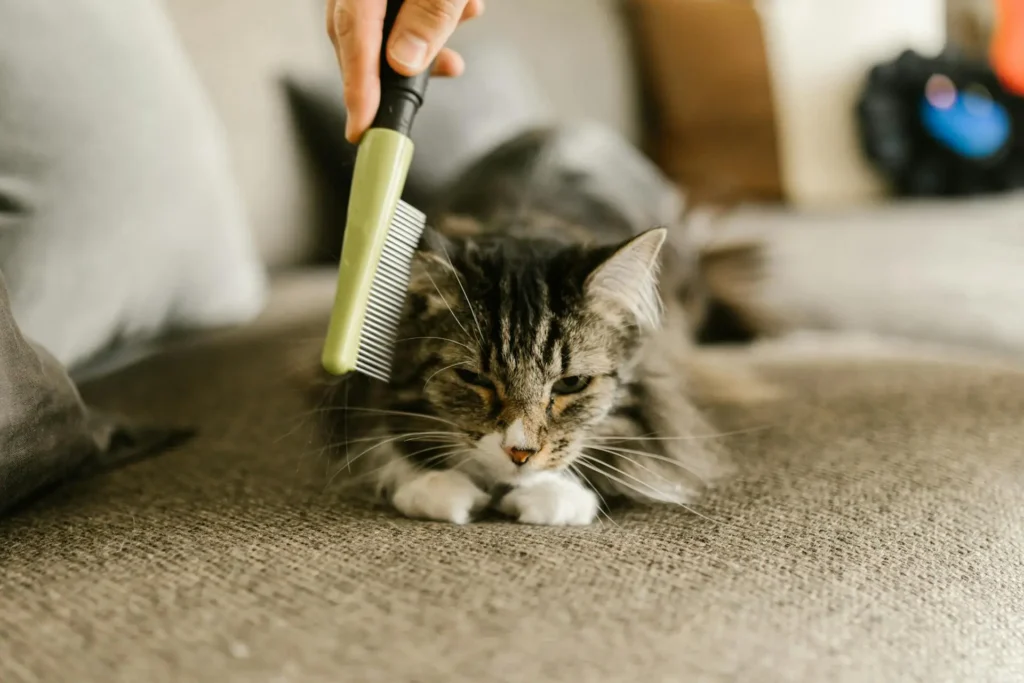Easy Cat Grooming Tips: Keep Your Feline Healthy, Happy & Clean

Cat grooming is far more than a beauty routine—it’s a vital practice that supports your feline’s physical health, emotional well-being, and the harmony of your home. While cats are famously self-cleaning, domestic life limits their ability to maintain optimal hygiene. Indoor cats, especially long-haired breeds, often need human help to prevent matting, hairballs, skin infections, and stress-related behaviors. Regular grooming reduces shedding by up to 90%, minimizes allergens, and gives you a front-row seat to spotting early signs of illness—like lumps, fleas, or dental disease. This comprehensive 2500-word guide covers everything: essential tools, step-by-step techniques, breed-specific care, DIY hacks, common mistakes, and when to call a professional. Perfect for cat grooming for beginners.
Beyond health, grooming is a bonding ritual. The gentle touch of brushing releases oxytocin in both you and your cat, reducing anxiety and building trust. Cats that tolerate grooming are easier to medicate, transport, and examine at the vet. Whether you’re a new cat parent or a seasoned pro, you’ll walk away with actionable, vet-approved strategies to keep your cat purring, shiny, and stress-free.
Why Cat Grooming is Important: The Science & Benefits
Grooming mimics natural feline behaviors observed in wild ancestors—licking to clean, scratching to shed dead hair, and rolling to distribute oils. But indoor cats face unique challenges: limited space, reduced activity, and altered diets. Without regular grooming, these factors lead to matted fur, hairballs, obesity-related skin issues, and even behavioral problems like excessive scratching or hiding.
Health Benefits (Expanded)
Regular grooming removes loose fur, dirt, dander, and environmental debris before they’re ingested. Hairballs—trichobezoars—affect 1 in 3 cats annually and can cause vomiting, constipation, or life-threatening intestinal blockages. Brushing stimulates sebaceous glands, distributing natural oils that keep the coat waterproof and shiny while preventing dry, flaky skin.
It also reduces Fel d 1, the primary cat allergen, by up to 80% (per Indoor Biotechnologies). Pair grooming with fresh air for pets to further improve indoor air quality. During grooming, you can detect fleas, ticks, lumps, wounds, or skin infections early—critical since cats hide pain. For long-haired cats, matting pulls on skin, causing pain, bruising, or hotspots. Nail trimming prevents ingrown claws, which can lead to abscesses or lameness. Ear cleaning removes wax and debris, reducing otitis risk (common in 20% of cats). Dental care fights periodontal disease, which affects 70% of cats by age 3 (AVMA). In short, grooming is preventive medicine.
Behavioral & Emotional Benefits
Grooming sessions are powerful bonding opportunities. The rhythmic motion of brushing calms the nervous system, lowering cortisol levels. Cats learn to associate your touch with safety, making them more social, less skittish, and easier to handle during vet visits or travel. It also curbs stress-grooming, which causes bald patches (alopecia). Positive reinforcement—treats, praise, play—turns grooming into a rewarding game. Over time, even anxious or feral cats can learn to enjoy it.
Home & Lifestyle Benefits
Less shedding means cleaner furniture, clothes, and air. Grooming reduces airborne dander, improving indoor air quality for allergy sufferers. It prevents scratch damage from overgrown nails. Protect your furniture with the top 10 furniture ideas for cats 2025. A well-groomed cat is calmer, lowering destruction from boredom or discomfort. Planning a trip? Check out the best pet-friendly hotels that welcome groomed, happy cats.
Essential Grooming Tools: Build Your Kit
Quality tools make grooming safe, effective, and stress-free. Avoid human or dog products—cat skin has a different pH (5.5 vs 7.5 for humans). Start with these must-haves:
- Brushes & Combs:
– Slicker brush: Fine wire pins remove mats and loose undercoat (best for medium/long hair).
– Bristle brush: Soft bristles distribute oils and add shine (ideal for short hair).
– Undercoat rake: Reaches deep into double coats (e.g., Maine Coon, Siberian).
– Flea comb: 30+ teeth per inch traps fleas and eggs.
– De-shedding tool: Furminator or similar—use once weekly max to avoid over-stripping. - Nail Clippers / Grinders:
– Guillotine clippers (Safari, Millers Forge): Sharp, precise.
– Rotary grinder (Dremel Pet, Casfuy): Quieter, smoother edges, less scary for sensitive cats. - Ear Cleaning Supplies:
– Vet-approved solution (Epi-Otic, Virbac).
– Cotton balls or gauze (never Q-tips in canal).
– Hemostat for plucking hair (only if trained). - Dental Care Tools:
– Finger brush or soft cat toothbrush.
– Enzymatic toothpaste (poultry/beef flavor—never human).
– Dental wipes or water additives (Oxyfresh, TropiClean). - Shampoo & Wipes:
– Waterless foam (Burt’s Bees).
– Dry shampoo powder.
– Hypoallergenic wipes.
– Oatmeal or chlorhexidine shampoo for sensitive skin.
Pro Tip: Store in a portable caddy with a lid. Total cost: $50–$150. Replace brushes every 6–12 months.
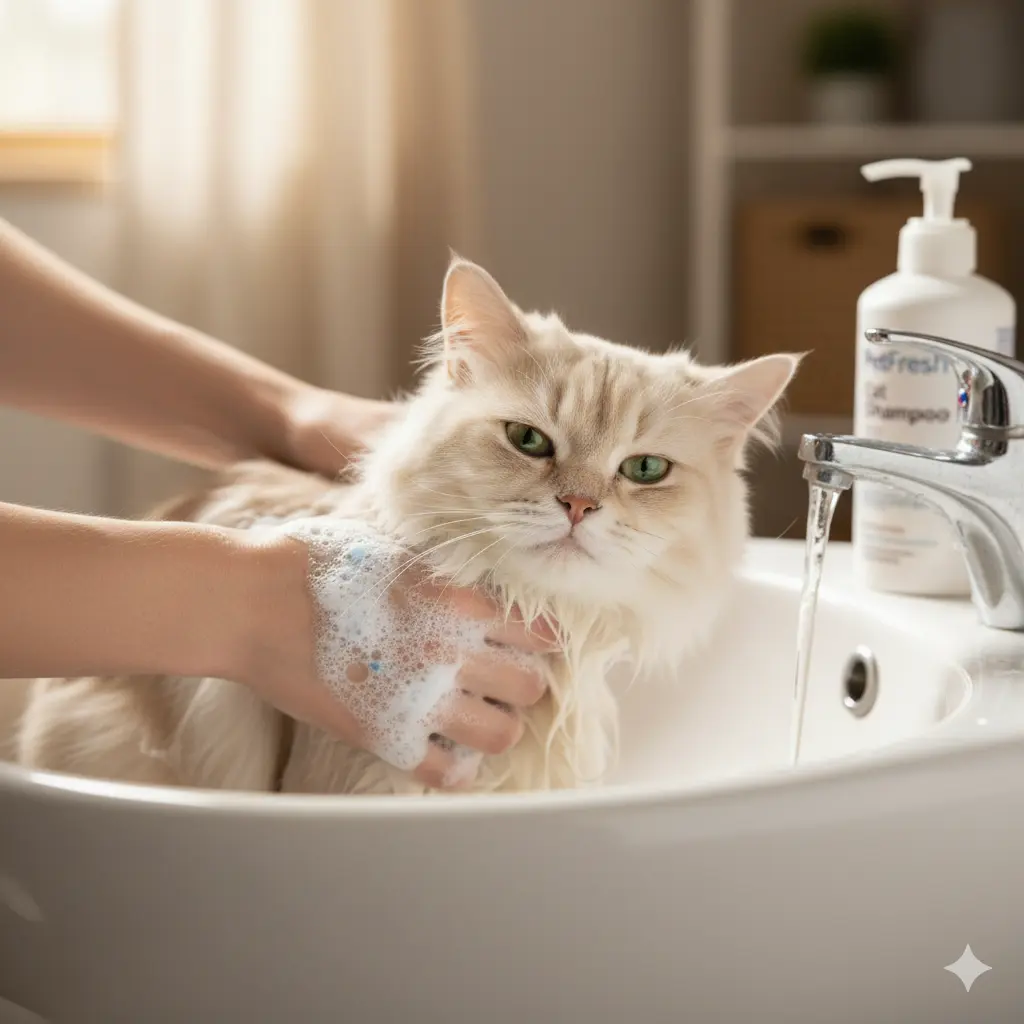
Step-by-Step Grooming Guide: From Brushing to Bathing
Start sessions short (5–10 minutes) and gradually increase. Always use treats, praise, and stop if stressed. Groom in a quiet, familiar room with good lighting.
Brushing: The Foundation
Begin with a calm cat on a non-slip surface (towel or mat). Use a wide-tooth comb to gently detangle mats from the ends upward—never pull. Follow with a slicker brush in the direction of fur growth. Use short, light strokes on belly, legs, and tail. For long-haired cats, part the coat in layers and brush section by section. Remove loose fur with a rubber grooming mitt. Brush short-haired cats 2–3 times weekly, long-haired daily. If mats are tight, use blunt scissors to cut parallel to the skin—or seek professional help.

Bathing: Only When Necessary
Most cats never need baths. Bathe only if oily, dirty, flea-infested, or post-surgery. Use a sink or tub with a rubber mat. Water temp: 100°F (lukewarm). Wet from neck down, avoiding ears and eyes. Massage in cat-specific shampoo, rinse thoroughly—residue causes irritation. Wrap in a thick towel; air-dry in a warm room or use a blow dryer on cool, low setting from 12 inches away. Frequency: 1–2 times per year. For water-phobic cats, use waterless foam shampoo.
Nail Trimming: Prevent Pain & Damage
Trim every 2–4 weeks. Hold the paw gently but firmly. Press the pad to extend the claw. Cut 1–2mm before the pink quick (use a flashlight if dark claws). If you nick the quick, apply styptic powder immediately. Use a grinder for smoother edges and less stress. Start trimming from kittenhood to build tolerance. Overgrown nails curve into pads, causing pain and infection.
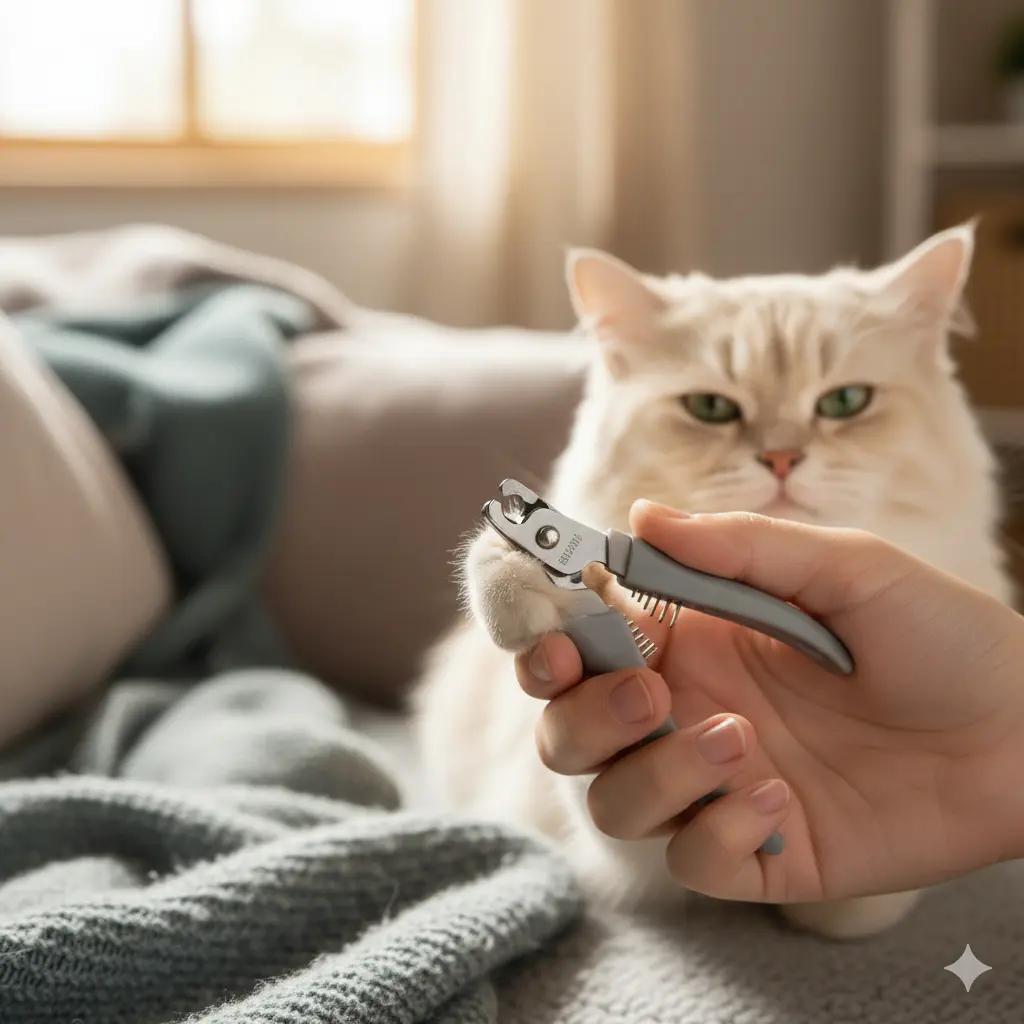
Dental Care: Fight Plaque Daily
Brush 3–7 times weekly. Use a finger brush or soft cat toothbrush with enzymatic toothpaste. Apply a pea-sized amount and brush in circular motions along gums and teeth. Use dental wipes for quick cleans. Add water additives daily. Feed dental treats (VOHC-approved). Schedule professional cleanings annually under anesthesia. Periodontal disease causes tooth loss, heart disease, and kidney damage.

Grooming Tips by Cat Type: Short, Long, Senior & More
Short-Haired evacuated
Breeds like Siamese, Abyssinian, British Shorthair. Brush 1–2 times weekly with a bristle brush or rubber mitt to remove loose fur and stimulate oils. Bath rarely—only if dirty. Trim nails monthly. Check ears weekly. Dental care standard. Short coats hide skin issues—part fur to inspect.
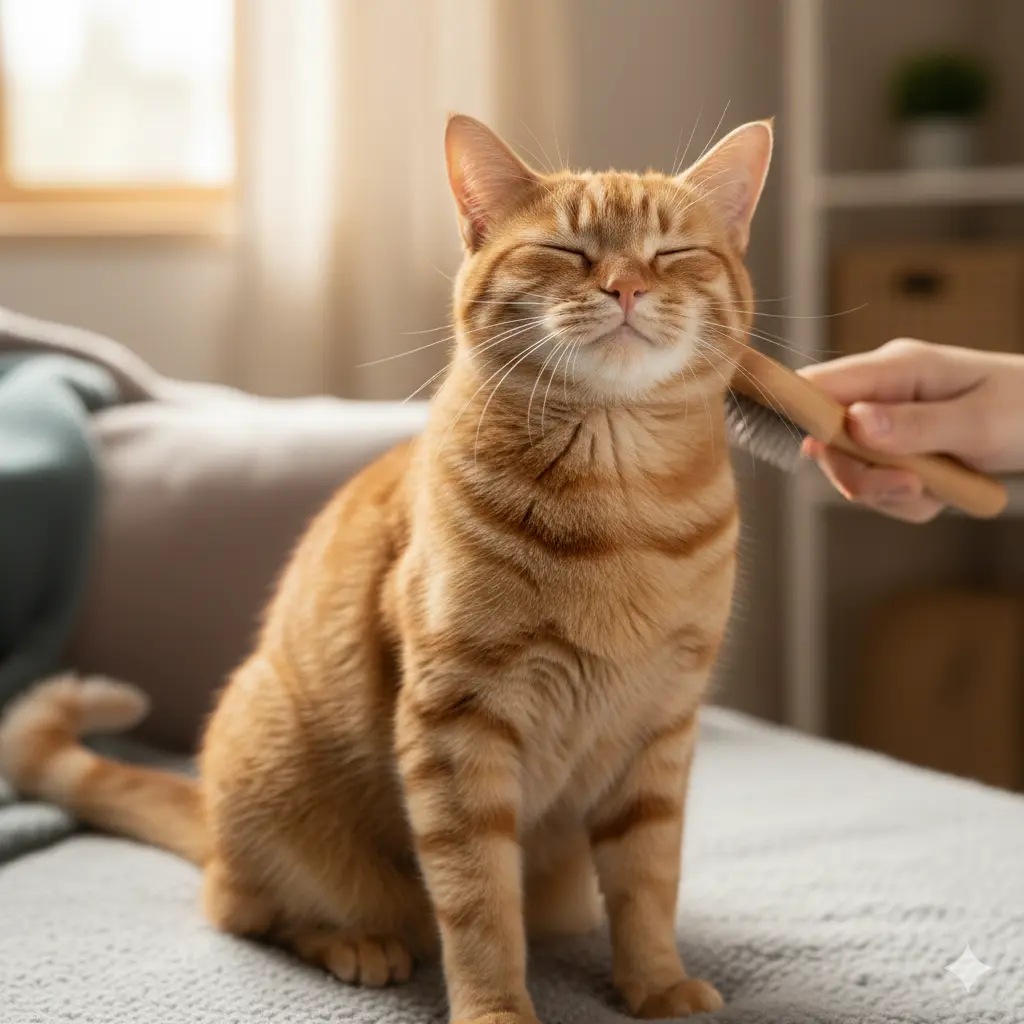
Long-Haired Cats
Persian, Maine Coon, Ragdoll, Himalayan. Brush daily with slicker brush + greyhound comb. Section coat into layers; start from belly and work up. Focus on armpits, belly, and behind ears—prime matting zones. Bath monthly if oily. Use de-matting tools. Check for fecal matter stuck in fur (sanitary trim if needed). Long hair traps litter and debris.

Senior Cats (10+ years)
Use soft brushes to avoid fragile skin. Short sessions (5 min). Check for arthritis—trim nails more often. Monitor dental health (resorption common). Warm tools slightly. Watch for lumps, weight loss, or bad breath. Seniors groom less—step in gently. Fun fact: Senior Schnauzers need similar gentle care — learn more at adopt a Schnauzer.
DIY Grooming Hacks: Save Time & Money
- Damp rubber gloves: Wear kitchen gloves, dampen, and stroke—fur sticks like magic.
- Catnip spray: Spritz on brush to lure reluctant cats.
- Homemade wipes: 1 cup warm water + 1 tsp coconut oil + 2 drops cat shampoo. Soak paper towels, store in ziplock.
- Treat puzzles: Hide treats in a Kong or puzzle toy post-grooming.
- Lint roller + fabric softener sheet: Quick fur removal from furniture.
- Eco-friendly litter: Switch to tofu cat litter—it clumps better and reduces tracking from clean paws.
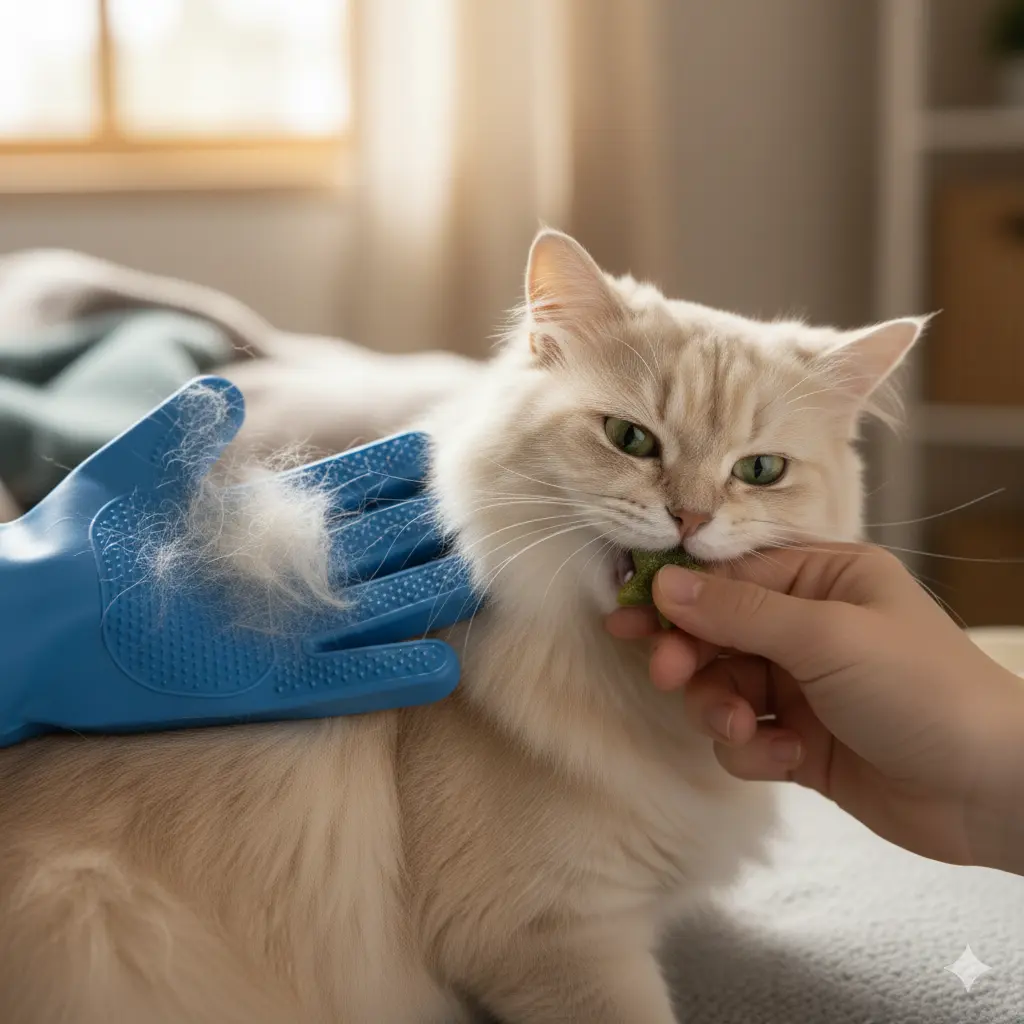
Common Grooming Mistakes to Avoid
- Brushing against the grain or too hard → causes pain and fear.
- Bathing too often → strips natural oils, dries skin.
- Ignoring mats until severe → requires shaving under sedation.
- Using human shampoo/toothpaste → toxic pH, causes vomiting.
- Forcing grooming → builds lifelong fear; always stop if stressed.
- Cutting the quick → bleeding and pain; use styptic powder.
Signs Your Cat Needs Professional Grooming
- Severe matting (tight to skin, can’t comb out).
- Skin redness, scabs, odor, or hot spots.
- Aggression or hiding during home grooming.
- Nails curling into pads or causing lameness.
- Excessive dander, greasiness, or fecal soiling.
Seek certified feline groomers (NCGIA) or veterinary groomers. They use fear-free techniques and sedation if needed.
Recommended Products & Tools
- Brushes: Hertzko Self-Cleaning Slicker, Furminator Short Hair, Safari Flea Comb.
- Nail Care: Casfuy Quiet Grinder, Safari Guillotine Clippers.
- Shampoos: Burt’s Bees Waterless Foam, Vet’s Best Flea & Tick.
- Dental: Virbac C.E.T. Enzymatic Toothpaste, Greenies Dental Treats.
- Grooming Toys: Kong Zoom Groom, Catit Self-Grooming Arch, or spritz with top five luxury pet scents 2025 for a spa-like finish.
Affiliate links may be used. We earn a small commission at no cost to you.
FAQ: Your Cat Grooming Questions Answered
How often should I groom my cat?
Short-haired: Brush 1–2x/week, nails monthly. Long-haired: Brush daily, nails bi-weekly. Bath 1–4x/year as needed. Adjust during shedding season (spring/fall).
Can I cut my cat’s hair at home?
Only trim small mats with blunt scissors parallel to skin. Full haircuts (lion cut) risk nicks—leave to professionals.
How to prevent scratching during grooming?
Trim nails first. Wrap in a towel (“purrito”). Use lick mats with tuna. Desensitize from kittenhood with short, positive sessions.
What if my cat hates water?
Use waterless shampoo, wipes, or dry bath powder. Introduce sink play with toys (no water) to build tolerance over months.
When should I see a vet about grooming issues?
Bald patches, excessive scratching, foul odor, or sudden grooming changes. Could indicate allergies, parasites, or hyperthyroidism.
Conclusion: Make Grooming a Joyful Ritual
Grooming is one of the greatest gifts you can give your cat—health, comfort, trust, and love in every stroke. Start slow, stay consistent, and celebrate small wins. A well-groomed cat is a happy cat, and a happy cat makes a happy home. Monitor for changes, consult your vet, and enjoy the purrs, head boops, and cuddles that follow every session. Your bond will thank you. Next, choose your pet costume for a fun grooming-themed photoshoot!
Disclaimer & Affiliate Note
This article contains affiliate links. If you click and make a purchase, we may earn a small commission at no extra cost to you—these funds support more free pet care content. Product recommendations are based on veterinary guidelines, user reviews, and personal testing. Prices and availability may vary. Grooming advice is general; every cat is unique. Always consult your veterinarian before starting new routines, especially for cats with medical conditions, skin issues, or anxiety. Never force grooming if it causes distress—seek professional help. We are not veterinarians; this is not medical advice.

Sadhna Goel
is a passionate pet parent and founder of PetPalaceHubs.com. With over 10 years of hands-on experience caring for cats and dogs, she shares practical, vet-approved tips to help pet owners build stronger bonds and happier homes. Follow her journey on the blog for daily pet care inspiration.

